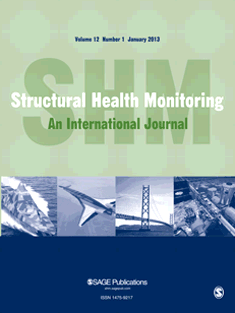
STRUCTURAL HEALTH MONITORING-AN INTERNATIONAL JOURNAL
Scope & Guideline
Innovating Safety and Sustainability in Engineering
Introduction
Aims and Scopes
- Structural Health Monitoring Technologies:
The journal covers a wide range of SHM technologies, including but not limited to, non-destructive testing (NDT), acoustic emission, fiber optic sensing, and ultrasonic methods. These technologies are essential for real-time monitoring and assessment of structural health. - Data Analysis and Machine Learning:
A significant focus is placed on the integration of machine learning and data analysis techniques for fault diagnosis, anomaly detection, and predictive maintenance in structures. This includes the use of deep learning, Bayesian inference, and other statistical methods. - Material-Specific Monitoring Techniques:
Research related to the monitoring of specific materials, such as concrete, steel, and composite materials, is a core area. The journal emphasizes innovative approaches tailored to the unique properties and behaviors of these materials under various conditions. - Multi-Scale and Multi-Modal Approaches:
The journal promotes research that utilizes multi-scale and multi-modal strategies for comprehensive health assessments. This includes combining various sensing technologies and analytical methods to enhance the reliability of damage detection. - Real-World Applications and Case Studies:
Emphasis is placed on the application of SHM techniques in real-world scenarios, including bridges, buildings, and industrial structures. The journal aims to bridge the gap between theoretical research and practical applications.
Trending and Emerging
- Machine Learning and Artificial Intelligence:
There is a significant rise in research utilizing machine learning and AI for predictive maintenance, fault diagnosis, and anomaly detection. This trend highlights the increasing reliance on data-driven approaches to enhance the effectiveness of SHM systems. - Integration of IoT and Smart Technologies:
The incorporation of Internet of Things (IoT) technologies into SHM practices is on the rise. Research is focusing on developing smart sensors and systems that enable real-time data collection and analysis, facilitating proactive maintenance strategies. - Advanced Signal Processing Techniques:
Emerging methodologies in signal processing, such as deep learning and advanced wavelet approaches, are gaining traction for use in fault detection and damage assessment, indicating a move towards more sophisticated analytical frameworks. - Sustainable and Resilient Infrastructure Monitoring:
Research addressing the monitoring of sustainable and resilient infrastructure is gaining attention. This includes studies focused on the impacts of climate change and environmental factors on structural integrity. - Digital Twins and Virtual Models:
The application of digital twin technologies and virtual modeling for structural health monitoring is trending. This approach allows for enhanced simulations and predictive modeling, contributing to more effective maintenance planning.
Declining or Waning
- Traditional NDT Methods:
While traditional non-destructive testing methods remain important, there has been a noticeable decline in new research focused on these conventional techniques. This may be due to the emergence of more advanced technologies that offer greater efficiency and accuracy. - Basic Statistical Methods:
The use of basic statistical methods for damage assessment and monitoring is becoming less prevalent. Researchers are increasingly favoring more sophisticated approaches, such as machine learning and artificial intelligence, for structural health evaluations. - Single-Sensor Applications:
Research focusing on single-sensor applications for monitoring has decreased as multi-sensor and integrated systems gain traction. There is a growing recognition of the benefits of using multiple data sources to improve accuracy and reliability in damage detection. - Static Monitoring Techniques:
Static monitoring techniques are being overshadowed by dynamic and real-time monitoring methods. The shift towards real-time data acquisition and analysis reflects the industry's need for timely and actionable insights.
Similar Journals

Bridge Structures
Transforming Engineering Challenges into Bridge SuccessesBridge Structures is an esteemed academic journal dedicated to the field of structural engineering, particularly focusing on the design, analysis, and maintenance of bridge systems. Published by IOS PRESS, a reputable publisher known for its contributions to various scientific fields, the journal serves as an integral platform for disseminating innovative research and advancements within the domain. With an ISSN of 1573-2487 and an E-ISSN of 1744-8999, Bridge Structures has established itself over the years—covering contributions from 2005 to 2024. The journal has attained a commendable ranking within the Q3 category in Building and Construction and holds a position within the 28th percentile among its peers according to the Scopus rankings. Though the journal operates on a subscription basis, its commitment to advancing engineering knowledge is paramount, making it essential reading for researchers, practitioners, and students eager to deepen their understanding of bridge engineering. The journal not only explores theoretical advancements but also emphasizes practical applications, providing a well-rounded perspective on current challenges and solutions in the field of bridge structures.
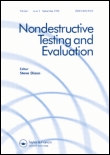
Nondestructive Testing and Evaluation
Transforming Engineering with Reliable Evaluation PracticesNondestructive Testing and Evaluation, published by Taylor & Francis Ltd, is a premier international journal dedicated to the dissemination of innovative research and practices in the field of nondestructive testing and evaluation. With a robust ISSN of 1058-9759 and an E-ISSN of 1477-2671, this journal has consistently served as a vital resource for researchers, professionals, and students interested in enhancing the safety and reliability of materials and structures through advanced testing techniques. The journal's significant impact, evidenced by its Q2 rankings across multiple categories—including Materials Science, Mechanical Engineering, and Physics and Astronomy, along with commendable Scopus rankings—reflects its commitment to high-quality scholarship. Covering the convergence of research from 1989 to 2024, Nondestructive Testing and Evaluation plays a crucial role in advancing methodologies that drive innovation in various engineering disciplines. While currently not offering an Open Access option, the journal remains a respected platform for exchanging knowledge that shapes the future of nondestructive methodologies.
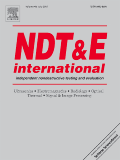
NDT & E INTERNATIONAL
Pioneering Insights in Condensed Matter Physics and Engineering.NDT & E International, published by Elsevier Science Ltd., stands as a preeminent journal in the fields of Condensed Matter Physics, Materials Science, and Mechanical Engineering. With an impressive 2023 impact factor, the journal is recognized in Q1 quartiles, reflecting its significant contributions and influence within these disciplines. As an essential platform for disseminating cutting-edge research, NDT & E International facilitates the exploration of non-destructive testing and evaluation methodologies, and thus is pivotal for professionals and researchers dedicated to advancing materials characterization and integrity assessments. Operating from the United Kingdom, the journal's commitment to high-quality research outputs underscores its esteemed position, as evidenced by its notable Scopus rankings across multiple categories. While access to articles is not open, the journal offers an extensive repository of knowledge vital for academia and industry alike, making it an invaluable resource for those engaged in the forefront of engineering and materials science research.
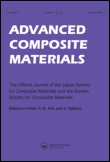
ADVANCED COMPOSITE MATERIALS
Shaping the Future of Mechanical Engineering with CompositesADVANCED COMPOSITE MATERIALS, published by Taylor & Francis Ltd, is a leading peer-reviewed journal in the field of materials science, specifically focusing on the innovative development and applications of composite materials. With an ISSN of 0924-3046 and E-ISSN 1568-5519, this journal serves as a vital resource for researchers and professionals worldwide, examining cutting-edge advancements and methodologies in composites, ceramics, and mechanical engineering. Having secured a solid standing in the academic community, it boasts impressive Scopus rankings, such as #185 in Mechanical Engineering with a 72nd percentile and #46 in Ceramics and Composites, emphasizing its relevance and rigor. Although not an open-access publication, its insights are invaluable for those looking to explore, contribute to, and stay abreast of the latest breakthroughs in the field from 1991 through 2024. By targeting critical areas within mechanics and material sciences, the journal continues to foster innovation and scholarly discussion, making it an essential venue for specialists striving to advance the capabilities and applications of composite materials.
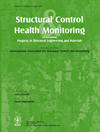
Structural Control & Health Monitoring
Transforming Challenges into Solutions in Structural EngineeringStructural Control & Health Monitoring, published by John Wiley & Sons Ltd, is a premier academic journal dedicated to advancing the fields of structural engineering, building and construction, and mechanics of materials. With a commendable Q1 status in three key categories and a strong presence in the scientific community, this journal boasts an impressive ranking of #20 in Building and Construction and #35 in Civil and Structural Engineering, reflecting its significant impact and relevance. Since transitioning to Open Access in 2023, the journal provides unrestricted access to innovative research, promoting a wider dissemination of crucial findings and methodologies. It specializes in the dissemination of advancements in health monitoring techniques, structural integrity evaluation, and control systems, aimed at researchers, professionals, and students seeking to enhance their understanding of contemporary challenges in structural management. With converged years spanning from 2004 to 2024, Structural Control & Health Monitoring remains committed to fostering a collaborative environment where cutting-edge research meets practical applications, positioning itself as an essential resource for those at the forefront of the engineering discipline.

International Journal on Smart Sensing and Intelligent Systems
Championing Open Access to Groundbreaking Discoveries.The International Journal on Smart Sensing and Intelligent Systems serves as a pivotal platform for groundbreaking research in the fields of Control and Systems Engineering and Electrical and Electronic Engineering. Published by SCIENDO since 2008, this open access journal facilitates wide dissemination of knowledge, enabling researchers and professionals to share and access innovative ideas without barriers. With an ISSN of 1178-5608 and a strong commitment to advancing smart sensing technologies, it is recognized for its scholarly contributions and has achieved a respectable Q3 category ranking in both engineering categories as per the 2023 classifications. Covering diverse topics related to intelligent systems, the journal is positioned to impact the development of next-generation solutions in engineering. Its ongoing convergence from 2010 to 2024 highlights a dedication to fostering collaboration and discourse among scholars and practitioners across the globe.
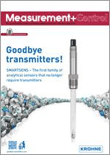
MEASUREMENT & CONTROL
Pioneering Innovations in Applied Mathematics and InstrumentationMEASUREMENT & CONTROL is a prominent journal published by SAGE PUBLICATIONS LTD, dedicated to advancing the fields of applied mathematics, control systems, and instrumentation. With an ISSN of 0020-2940 and an E-ISSN of 2051-8730, this open-access journal has been serving the academic community since 1968, ensuring that essential research findings are accessible to all. As of 2023, it is recognized within the Q3 quartile of Scopus rankings in key categories including Applied Mathematics, Control and Optimization, and Instrumentation, highlighting its relevance in an ever-evolving scientific landscape. The journal not only fosters high-quality research but also encourages the exchange of innovative ideas and techniques, making it an essential resource for researchers, professionals, and students alike. With a focus on the latest advancements and methodologies, MEASUREMENT & CONTROL remains a vital platform for disseminating knowledge and fostering collaboration within these interdisciplinary fields.
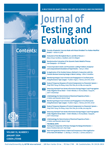
JOURNAL OF TESTING AND EVALUATION
Driving Excellence in Evaluation PracticesWelcome to the JOURNAL OF TESTING AND EVALUATION, an esteemed publication dedicated to the fields of materials science and mechanical engineering, published by the American Society for Testing and Materials. With a history of excellence since its inception in 1973 and a convergence of insightful research extending to 2024, this journal serves as a pivotal platform for disseminating innovative research, methodologies, and findings in testing and evaluation processes. Although it is not an open-access journal, it holds a respectable impact with a ranking in the third quartile across various categories and Scopus ranks, making it an important resource for academic and industry professionals alike. By providing rigorous evaluation of materials and engineering practices, the JOURNAL OF TESTING AND EVALUATION continues to shape the future of research in these dynamic fields, offering vital contributions that are essential for advancing knowledge and practical applications.
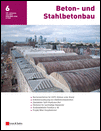
Beton- und Stahlbetonbau
Transforming Ideas into Concrete SolutionsBeton- und Stahlbetonbau is a renowned journal published by ERNST & SOHN, dedicated to advancing knowledge in the field of building and construction, particularly focusing on concrete and reinforced concrete engineering. Established in 1969, this peer-reviewed publication encompasses a broad range of topics, including innovative construction methods, structural analysis, and material performance, making it a crucial resource for researchers, scholars, and industry professionals alike. With an impact factor ranking it within the Q2 category in the Building and Construction field, this journal holds significant influence, evidenced by its Scopus rank of #112/223. Importantly, Beton- und Stahlbetonbau is committed to providing high-quality content that meets the academic rigor demanded by its audience, ensuring that readers remain at the forefront of technological advancements and research in concrete construction.

ULTRASONICS
Unveiling the Science of Sound and TechnologyULTRASONICS is a premier international journal published by Elsevier that has been a cornerstone of research in the field of acoustics and ultrasonics since its inception in 1963. With an impressive impact factor, it stands prominently in the Q1 category (2023) of Acoustics and Ultrasonics, ranked 6th out of 44 in Physics and Astronomy, placing it in the top 13% of its field. This journal offers a comprehensive platform for the dissemination of innovative research, ranging from theoretical studies to practical applications. Researchers, professionals, and students are encouraged to engage with cutting-edge findings that advance knowledge in ultrasonic technology, medical imaging, non-destructive testing, and other interdisciplinary applications. Although ULTRASONICS does not currently offer open access options, its rigorous peer-review process ensures high-quality, impactful publications that are essential for anyone involved in the field. Located in Amsterdam, Netherlands, the journal continues to uphold its reputation as a leading source of scientific knowledge that aims to facilitate advancements in technology and engineering.